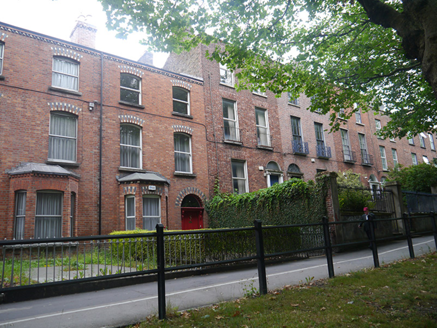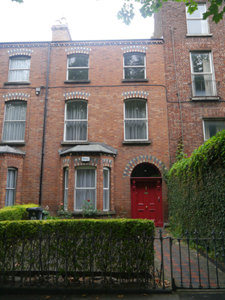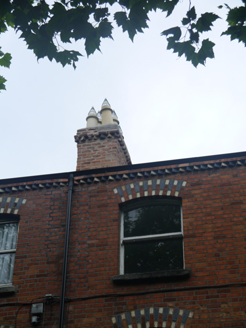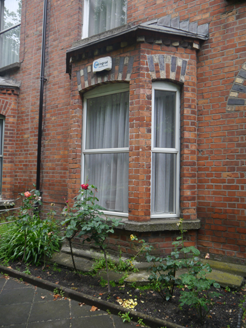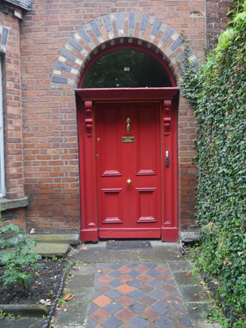Survey Data
Reg No
50130182
Rating
Regional
Categories of Special Interest
Architectural, Artistic
Original Use
House
In Use As
House
Date
1890 - 1900
Coordinates
316066, 236342
Date Recorded
02/07/2018
Date Updated
--/--/--
Description
Terraced two-bay three-storey house, built c. 1895, having canted single-storey bay to front (east) elevation and two-storey return to rear with enclosed yard. M-profile pitched slate roof with angled black ridge tiles, felted roof to canted-bay, red brick chimneystack to party wall with yellow clay pots and cogged brick caps; half-round metal gutter supported on cogged yellow and black brick eaves course. Red brick walling, laid in Flemish bond, over chamfered granite plinth. Segmental-headed window openings with polychrome brick voussoirs, granite sills, continuous granite sill to canted-bay, and one-over-one pane timber sliding sash windows except for bay window which has replacement uPVC frames. Round-headed doorway with polychrome brick voussoirs, carved timber doorcase comprising panelled pilasters with scrolled brackets supporting timber cornice, timber bolection-moulded four-panel door with brass furniture, and plain fanlight. Granite threshold with cast-iron boot-scrape, accessed by red and black tiled garden path with terracotta edging. Set back behind paved garden, bounded to street by cast-iron railings with decorative finials on cut granite plinth with hedging behind and cast-iron pedestrian gate; hedging to south boundary and rendered masonry walling to north. Stands on tree-lined section of Drumcondra Road Lower.
Appraisal
This attractive mid-terrace house is part of a group of late nineteenth-century houses on the west side of Drumcondra Road, set back behind a tree-lined buffer that separates them from the busy main thoroughfare. The terrace steps along the slight rise in topography and is distinguished by an attractive street frontage ornamented by a lively palette of red, yellow and black brick, and good-quality gauged brick detailing. The group was laid out in the late nineteenth century as part of the suburban expansion of Drumcondra and is typical of the development that characterizes the area, driven by speculative development by builders who often constructed small groups of terraced houses, resulting in subtle variety of proportions, materials and detailing. This group presents similar characteristics to buildings on St. Alphonsus Road, suggesting that it was built by the same developer. It adjoins an earlier nineteenth-century terrace to the north.
